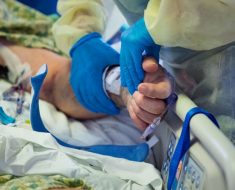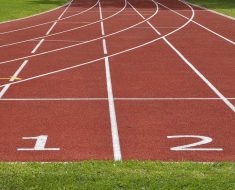In a recent study posted to the medRxiv* preprint server, a team of researchers from the United States (US) developed a saliva-based, extraction-free reverse transcription loop-mediated isothermal amplification (RT-LAMP) workflow for severe acute respiratory syndrome coronavirus 2 (SARS-CoV-2) detection.
 Study: Development and Implementation of a Simple and Rapid Extraction-Free Saliva SARS-CoV-2 RT-LAMP Workflow for Workplace Surveillance. Image Credit: Nhemz/Shutterstock
Study: Development and Implementation of a Simple and Rapid Extraction-Free Saliva SARS-CoV-2 RT-LAMP Workflow for Workplace Surveillance. Image Credit: Nhemz/ShutterstockTimely detection of SARS-CoV-2 infection followed by the isolation of contagious subjects is the key to preventing coronavirus disease 2019 (COVID-19) transmission. Nasopharyngeal swab sampling for COVID-19 detection poses discomfort to the patients and requires trained healthcare professionals and laborious molecular diagnostic methods.
Saliva has emerged as an effective alternative to nasopharyngeal sampling for COVID-19 surveillance testing in asymptomatic individuals with a high viral shedding rate. Saliva-based RT-LAMP methods are being explored amid the COVID-19 pandemic alongside reverse-transcription-quantitative polymerase chain reaction (RT-qPCR) as it rapidly detects pathogens with high sensitivity and specificity.
There is an unmet need for an alternative and simpler diagnostic test approach which can be broadly implemented to support the overwhelmed healthcare system during the COVID-19 pandemic. In this quest, the authors of this study developed a fast, simple, and sensitive saliva-based testing workflow requiring minimal sampling procedures and sophisticated equipment.
Study design
In this study, COVID-19 test results were collected, processed, and reported in compliance with Clinical Laboratory Improvement Amendments (CLIA). A total of 1,670 saliva samples were collected from 172 uninfected individuals between October 2021 to March 2021. The authors conducted a workplace surveillance program including 755 individuals that provide saliva samples one to three times per week between April 2021 to Feb 2022.
Optimization of the saliva sample preparation was performed for rapid release and viral ribonucleic acid (RNA) stabilization allowing reliable detection of SARS-CoV-2. The authors modified the various buffers to include pluronic F-68 surfactant referred to as saliva lysis buffer (SLB). Gamma-irradiated SARS-CoV-2 virions were used to spike saliva as a positive control.
In the RT-LAMP assay, the samples were each tested for SARS-CoV-2 (COVID LAMP) and actin (Actin LAMP). Finally, the time to reach the fluorescence detection threshold (Tt) was calculated.
Findings
The findings of the study demonstrated that the sensitivity of RT-LAMP assay was increased on the addition of 0.68% pluronic F-68 surfactant. An optimal temperature of 95°C for 5 min for heating samples spiked with viral copies provided higher reproducibility across a range of viral loads.
The researchers assessed the association of RT-LAMP performance with different phases of saliva samples. They observed that SARS-CoV-2 was detected with the fastest amplification in saliva supernatant but not in saliva sediment or re-suspended sample.
Furthermore, the best performance of the RT-LAMP assay was observed with 1 µL of saliva samples. In saliva samples less than 1 µl, more variations were noted, and an increase in saliva volume delayed the reaction time of viral detection.
The robustness of the extraction-free RT-LAMP assay was measured from a large cohort of negative saliva samples spiked with 50 copies/µl of the SARS-CoV-2 virus. In the COVID-LAMP reaction, more than 98% of samples scored positive in colorimetric and fluorescent assay with 26 min cut-offs. Over 91% of samples scored COVID-positive in the fluorescent assay within 15 minutes. The authors observed a positive correlation between Tt values from all samples of COVID-19 and actin amplification reaction.
The authors demonstrated successful detection of a single SARS-CoV-2-positive specimen in a pool of randomly selected 16 negative saliva samples. Overall, the pooling strategy was beneficial when a specific saliva sample was colored, viscous, had low pH, and had interfering substances.
Extraction-free RT-LAMP assay demonstrated a sensitivity of 100%, 82%, and 63% when spiked with 40, 20, and 10 copies of viruses/µL, respectively, with a limit of detection (LOD) of 40 viral copies/µL of saliva.
Clinical validation studies using 30 pre-defined COVID-19-positive and COVID-19-negative saliva specimens showed 97% overall clinical sensitivity and 100% clinical specificity of RT-LAMP workflow demonstrating high accuracy of the assay.
The higher performance of RT-LAMP assay was observed compared to RT-qPCR when purified RNA was used as the input material. Only the samples with quantification cycle (Cq) values >34 in RT-qPCR failed to amplify in the RT-LAMP assay.
This workflow was implemented successfully in the CLIA laboratory setting for workplace surveillance and reporting. Interestingly, only 0.13% of samples generated inconclusive results highlighting the robustness of the test. The peaks in new cases followed a holiday period and mirrored the high infection rate in Massachusetts and nationwide.
Conclusion
The study demonstrated a robust and highly sensitive extraction-free, saliva-based RT-LAMP workflow with a simple colorimetric endpoint and fluorescence readout for SARS-CoV-2 detection. The assay had a rapid testing time and allowed quick tracing and isolation of COVID-19-positive subjects at the workplace to prevent further transmission.
The RT-LAMP assay enables an extensive and frequent SARS-CoV-2 diagnostic testing of the population with trace viral loads before symptom onset resulting in the effective management of the COVID-19 pandemic.
*Important notice
medRxiv publishes preliminary scientific reports that are not peer-reviewed and, therefore, should not be regarded as conclusive, guide clinical practice/health-related behavior, or treated as established information.
- Zhiru Li, et al. (2022). Development and Implementation of a Simple and Rapid Extraction-Free Saliva SARS-CoV-2 RT-LAMP Workflow for Workplace Surveillance. medRxiv. doi: https://doi.org/10.1101/2022.03.11.22272282 https://www.medrxiv.org/content/10.1101/2022.03.11.22272282v1
Posted in: Medical Research News | Medical Condition News | Disease/Infection News
Tags: Actin, Assay, Coronavirus, Coronavirus Disease COVID-19, covid-19, Diagnostic, Fluorescence, Healthcare, Laboratory, Nasopharyngeal, Pandemic, pH, Polymerase, Polymerase Chain Reaction, Respiratory, Ribonucleic Acid, RNA, Sample Preparation, SARS, SARS-CoV-2, Severe Acute Respiratory, Severe Acute Respiratory Syndrome, Syndrome, Transcription, Virus

Written by
Sangeeta Paul
Sangeeta Paul is a researcher and medical writer based in Gurugram, India. Her academic background is in Pharmacy; she has a Bachelor’s in Pharmacy, a Master’s in Pharmacy (Pharmacology), and Ph.D. in Pharmacology from Banasthali Vidyapith, Rajasthan, India. She also holds a post-graduate diploma in Drug regulatory affairs from Jamia Hamdard, New Delhi, and a post-graduate diploma in Intellectual Property Rights, IGNOU, India.
Source: Read Full Article





